Around the world, ocean dead zones are growing at alarming rates, making entire swaths of underwater habitats uninhabitable by marine life. Most of this is directly tied to agriculture and the way in which it contributes to a completely different, but connected, problem: soil or land degradation. Media coverage of the growing dead zones has failed to explain how and why these sections of ocean are devoid of oxygen and life, but a quick glance at a map of affected areas reveals a telling picture: dead zones exist along the coast and can be directly tied to human activity. The culprit is the copious amounts of chemical fertilizer and livestock manure collecting in runoff and making its way down rivers and into the oceans. (See the map below. Graphic Credit: Bartz/Stockmar, CC BY-SA 3.0.)
The Downstream Effect of Chemical Fertilizer
This year, scientists predict the Gulf of Mexico could experience one of the largest dead zones in history; an astounding 8,000 miles of ocean, an area the size of Massachusetts, will be hypoxic (or devoid of enough oxygen to support any form of marine life). Any time a river crosses an agricultural landscape and then empties into a body of water, the runoff brings nitrogen and phosphorous which causes a massive algal bloom. The blue-green algae then suffocate the ocean. Ultimately, the marine life is starved of the oxygen it needs and can no longer inhabit these dead zones. This negative effect of chemical fertilizers and livestock runoff is often defended on grounds that the means justify the ends, that it is impossible to feed the world without chemical fertilizers and protein from animal agriculture. In fact, neither are a necessity, nor are they viable, long term solutions.

A Flawed Solution to Feeding the Planet
Chemical fertilizers are used because of a lack of nutrients naturally present in degraded soil. Land degradation is a process that begins when forests are initially cleared for agriculture and ultimately overfarmed or overgrazed until the carrying capacity of the land has dwindled. Once the original tree cover has been stripped from the entire piece of land, a slow death of desertification ensues as endless rows of a single crop (monocropping) are planted and harvested year after year, depleting the soil with every passing season. Most farmscapes around the world have long been degraded and denuded, leaving many farmers to resort to commercial fertilizers to meet their production expectations.

A monocrop field is left devoid of growth, protection, nutrients, and soil.
When fertilizers are applied to a field, much of it runs off the farm or percolates down through the soil. It not only changes the pH of the soil, it misses the roots of many plants. A small percentage of the nutrients find their way to the roots directly where plants take up the Nitrogen, Phosphorus and Potassium directly. Bypassing the soil to nourish crops creates a dangerous dependence on chemical fertilizers and kills the soil in the process. After adopting chemical fertilizers, the only way for a farmer to continue having productive yields is to purchase more chemical fertilizer.
In his book One Shot, Trees for the Future Executive Director John Leary identifies this rising dependance.
“Farmers used to ensure that everything they took out of the ground was put back in, in the form of biomass (organic material). This created a closed-loop scenario, where phosphate would have the capacity to be reused up to forty-six times as food, fuel, fertilizer, and food again. On the other hand, when phosphorus, in the form of DAP, is applied to nutrient-starved soil, it has the capacity to be used only once. Excess amounts of DAP application run-off into streams, creating algae blooms that pollute water and kill fish and other animals.” (Leary, 48)
These unsustainable practices are the reason for an 8,000-mile stretch of ocean in the Gulf barely capable of sustaining any form of life. The current way of farming is wasteful, expensive, and it’s decimating land and sea biodiversity. We must transition from these degenerative practices to regenerative methods now.
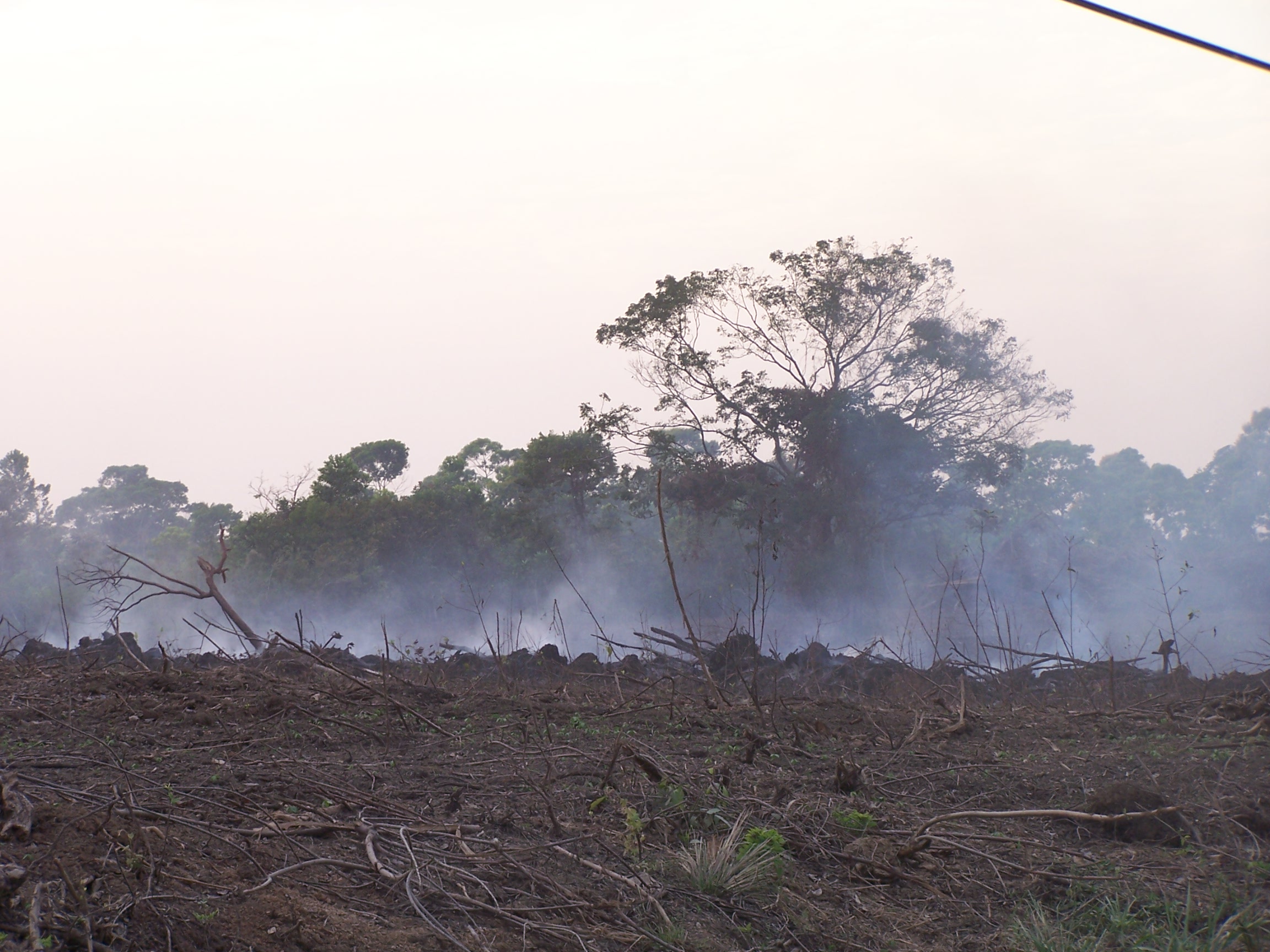
Damaging practices like clearing and burning fields for monocropping make agriculture the number one cause of deforestation.
Healthy soils don’t need chemicals: Transitioning from degenerative to regenerative agriculture
Healthy soils are the basis of any agricultural system and are vital for providing crops with the mineral nutrients and moisture they need, when they need it. Enhancing the air, water, and organic matter in the soil, and protecting all the beneficial organisms that live within it, will result in sustainably higher yields of better-quality crops, be it vegetables, field crops, fruits, or timber.
The solution is clear, cost-effective, and sustainable: Trees.
Instead of clearing fields, intensifying monocrop production, and ultimately degrading the land, agriculture focused on the power of trees (agroforestry) strives to protect the soil, diversify crops, and optimize the land sustainably.
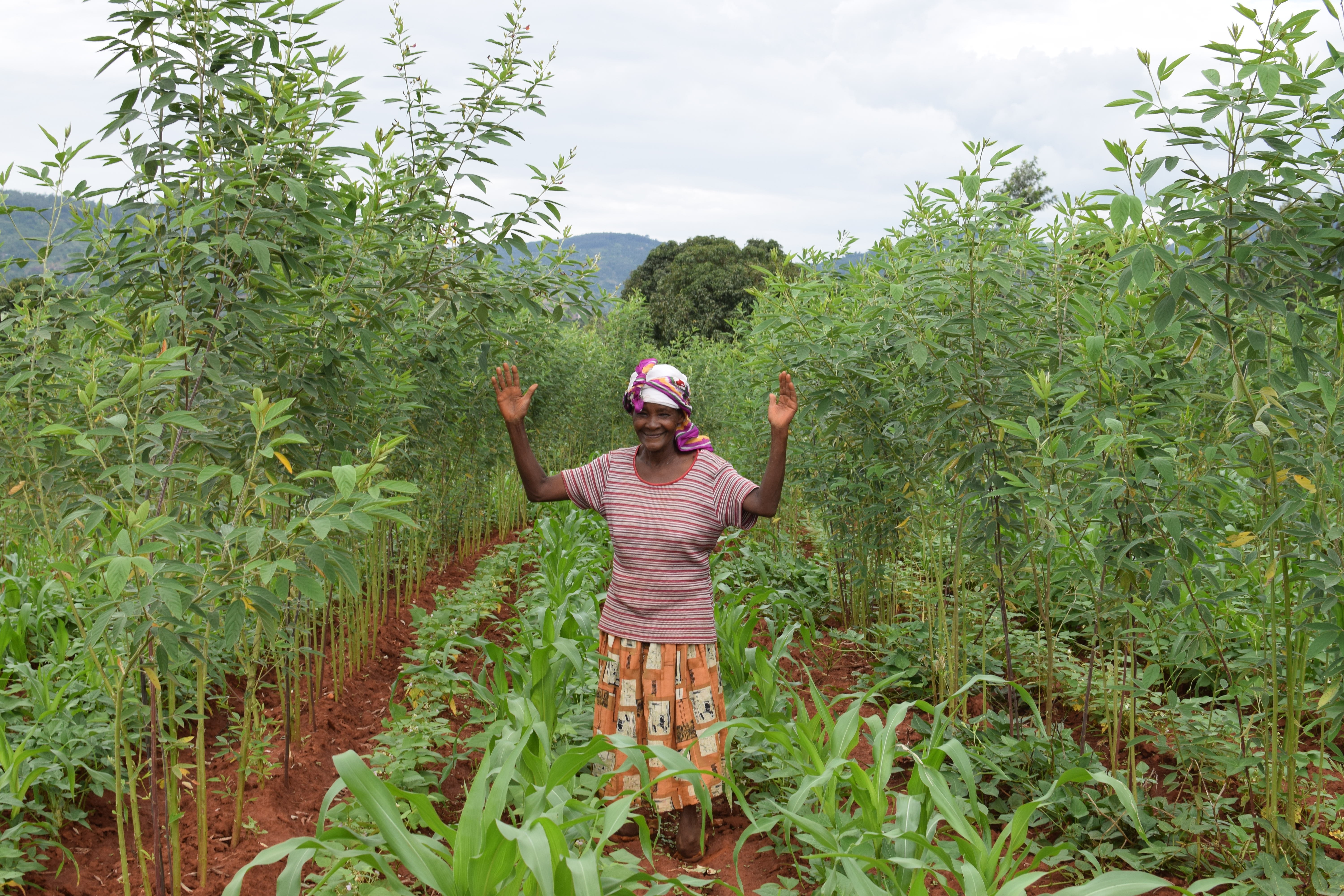
The Forest Garden Approach is a well-planned, four-year regenerative methodology that uses the best techniques in agroforestry to guide farmers through the process of sustainably maximizing productivity.
Trees for the Future has 30 years of experience working with farmers to find innovative ways to revive degraded lands. That is 30 years of research and development, testing the most effective ways to use fast-growing trees to solve the most common and pressing problems farmers face. The Forest Garden Approach proves the power of trees.
“While chemical fertilizers contain just a few macro nutrients (nitrogen, phosphorus, and potassium), trees pull a variety of macro and micro nutrients from the depths of the soil and recycle them into the topsoil through their leaves. These leaves contain nutrients that are essential for people’s health and which have long leached out of the soil – like iron, manganese, zinc, and boron. By tilling leaves into the soil, farmers begin to restore the soil with minerals that help plants grow and ensure healthy nutrient-rich food” (Leary, 54).
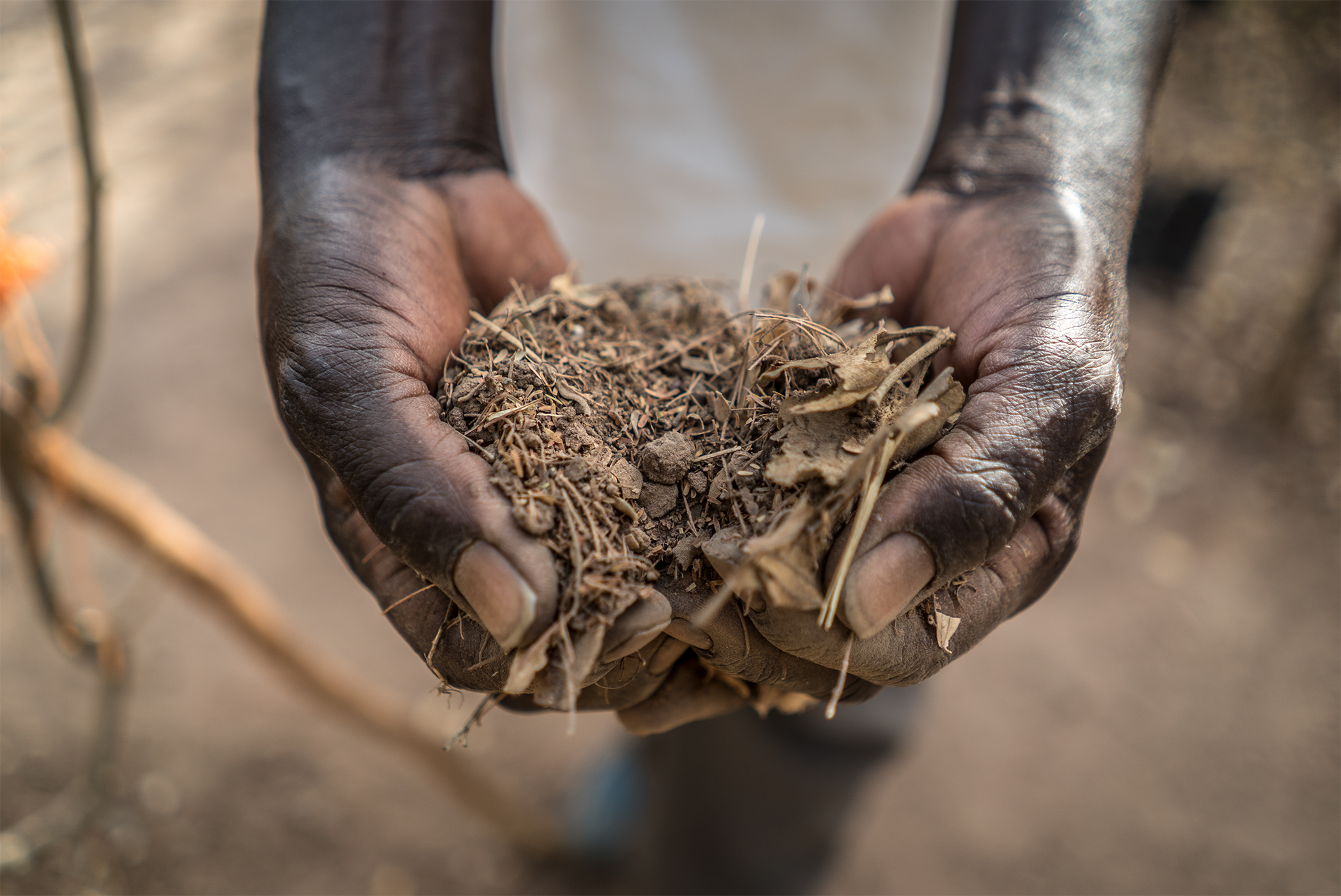
Healthy soils are the basis of any agricultural system and are vital for providing crops with the mineral nutrients and moisture they need, when they need it.
Most species in a forest have evolved to grow and flourish in the cooler, more humid understory of other trees. When an area has been completely deforested, new seedlings must have the ability to tolerate 12 hours of hot sun beating down every day. We have learned how to use fast-growing, nitrogen-fixing pioneer trees that start to revitalize highly degraded soils. They rain down large amounts of leaf litter that build the top soil, and their small leaflets decompose quickly.
But the real magic happens in their roots.
Not only do the strong tap roots plunge down into the soil seeking lost moisture and nutrients, but many trees in the Leguminosae family have a symbiotic relationship with bacteria in their roots.
The regeneration process – in fact, the origins of life itself – happens at a microscopic level in the roots of trees. Root hairs trap specific types of bacteria which then enter into the root cells. Over time the root develops a nodule containing a package of nitrogen that may feed the tree now or release the nitrogen in the soil making it available to other plants in the future.
Trees for the Future teaches farmers how to plant diverse rows of nitrogen fixing trees (NFTs) across crop fields. Supplemented with compost and manure, this technique helps substitute and replace the need for chemical fertilizer. When farmers select NFTs that also produce fruit, peas or other valuable products the benefits are amplified.
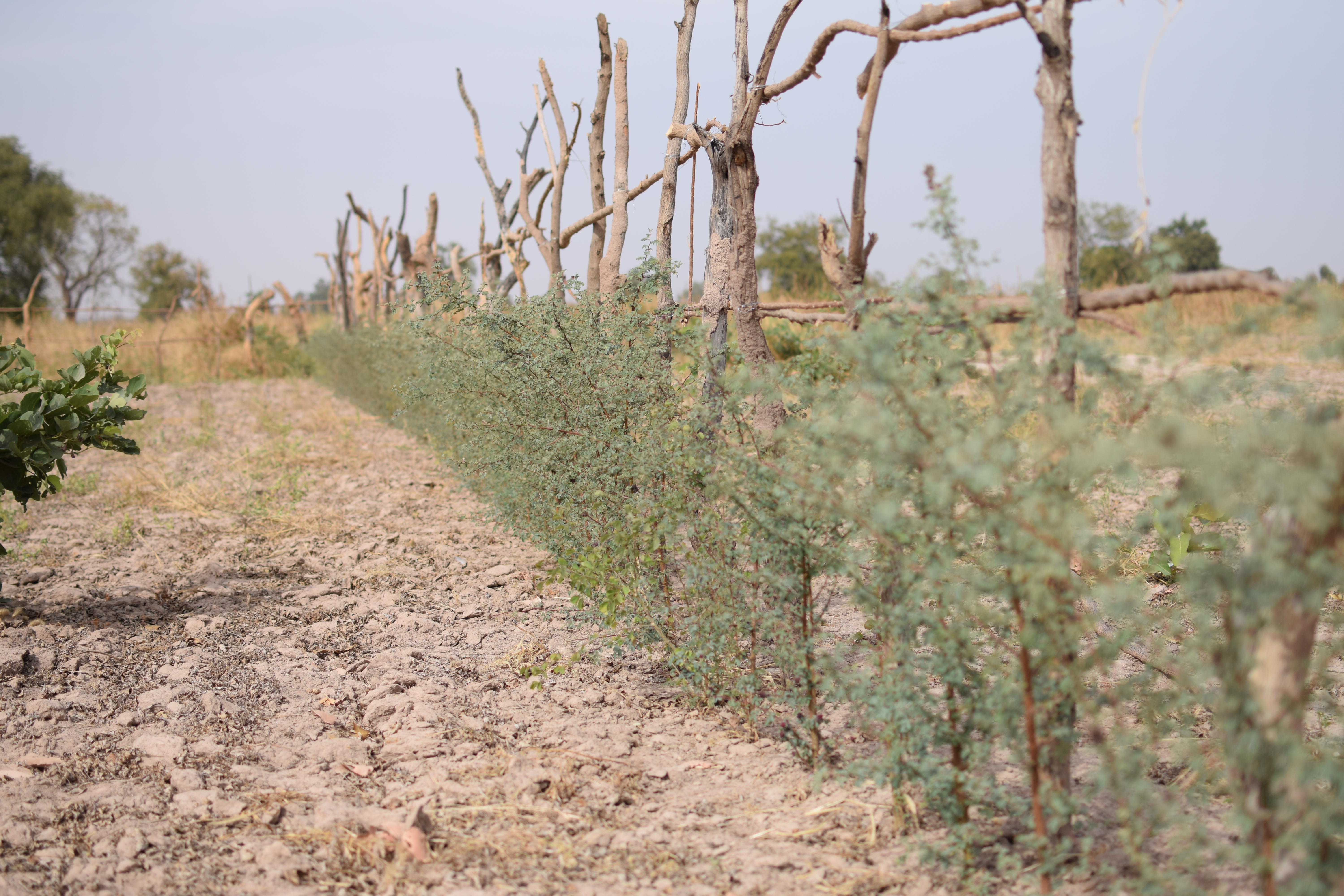
A living fence of trees works double duty to protect the field from wind erosion and animals while the roots recharge the ground with water and nutrients.
The Forest Garden Approach is a well-planned, four-year regenerative methodology that uses the best techniques in agroforestry to guide farmers through the process of sustainably maximizing productivity. Farmers first learn to protect their field with thorny barriers so that they can plant many rows of nitrogen-fixing trees across it. The first round of trees planted begins to improve the growing conditions by cooling the land and trapping moisture. Within the improved micro-climate, farmers are able to grow more valuable crops and fruit trees.
The third and final phase is when farmers learn to truly regenerate soil. They learn to make compost to enrich soil, mulches to conserve water, and cover crops to add organic matter. They learn to replace pesticides with non-toxic solutions, and they reduce their use of harmful chemical fertilizers.
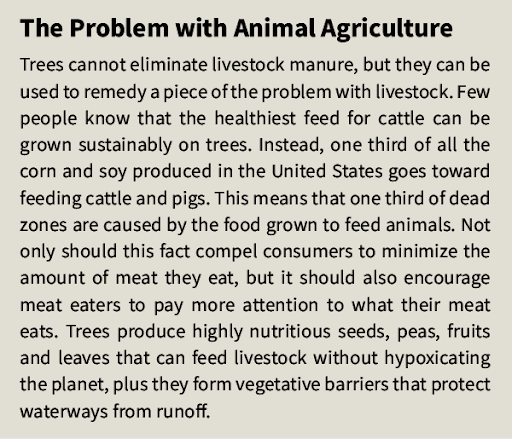
The Long Road Ahead
It is visibly clear that ecosystems are dying across land and sea, and the reason is as equally apparent: the inputs and byproducts of wasteful food systems are the cause. If these systems are allowed to remain in place seafood will not be on the menu… there won’t even be a menu.
Changing the entire way in which this planet grows, sells, purchases, and consumes food will be no easy task. Consumers have a responsibility to refuse to allow the status quo of big agriculture business to continue, and farmers have the duty and obligation to feed the planet in a healthy, nondestructive, and sustainable way.
But if each actor can do their part to reduce consumption of meat and dairy, integrate trees into farming and livestock systems, and reduce the use of chemical fertilizer, life on land and sea has a chance. It won’t be easy, but it is necessary, so let’s get planting.

Farmers have the duty and obligation to feed the planet in a healthy, nondestructive, and sustainable way.
 United States
United States
Comments